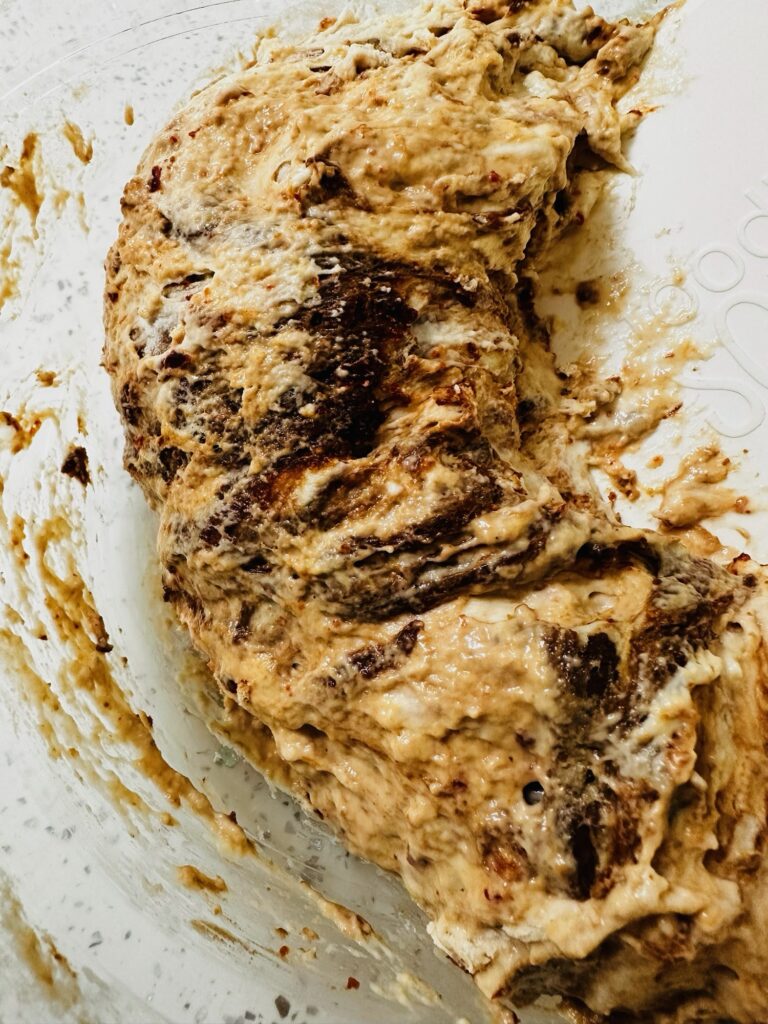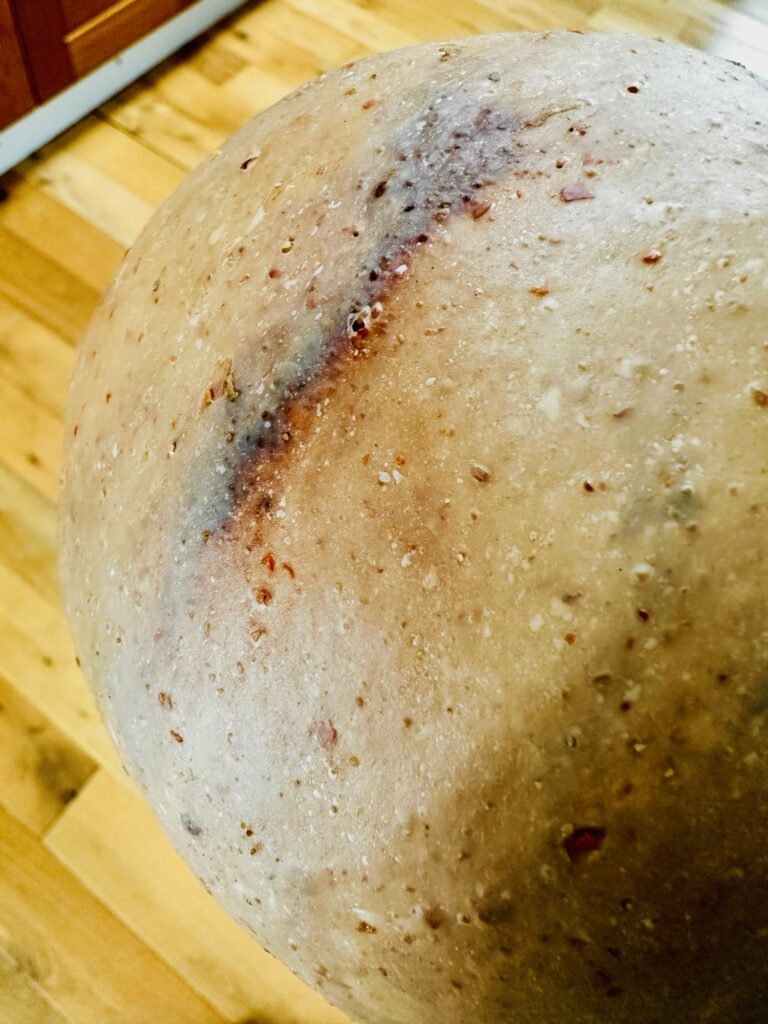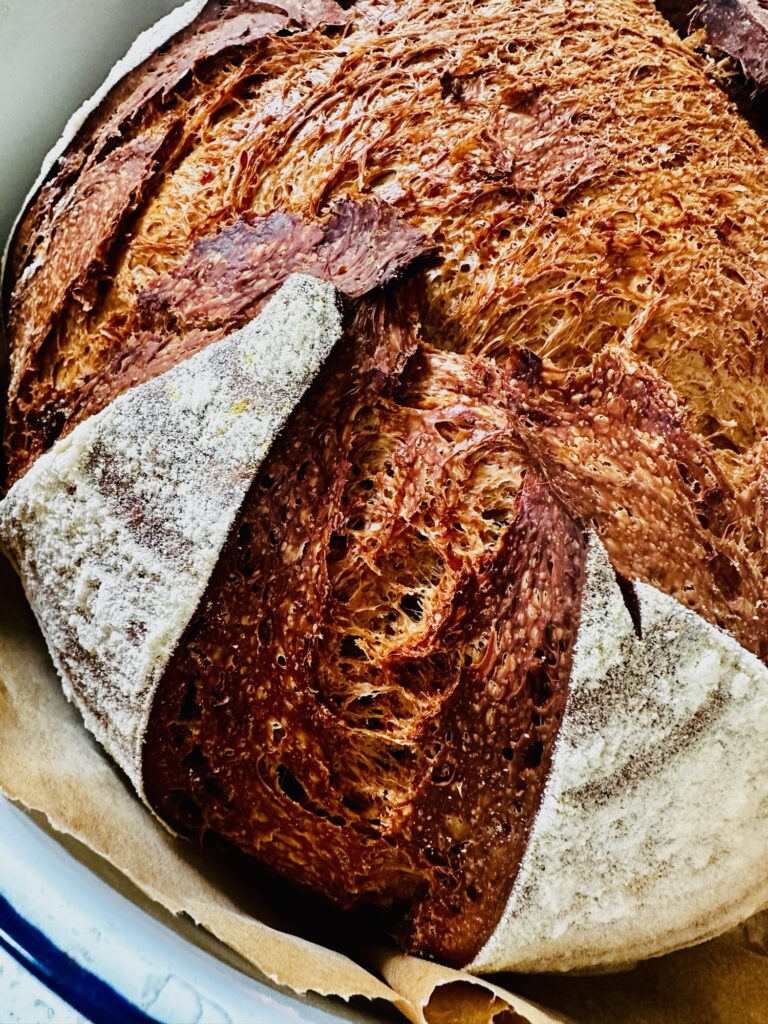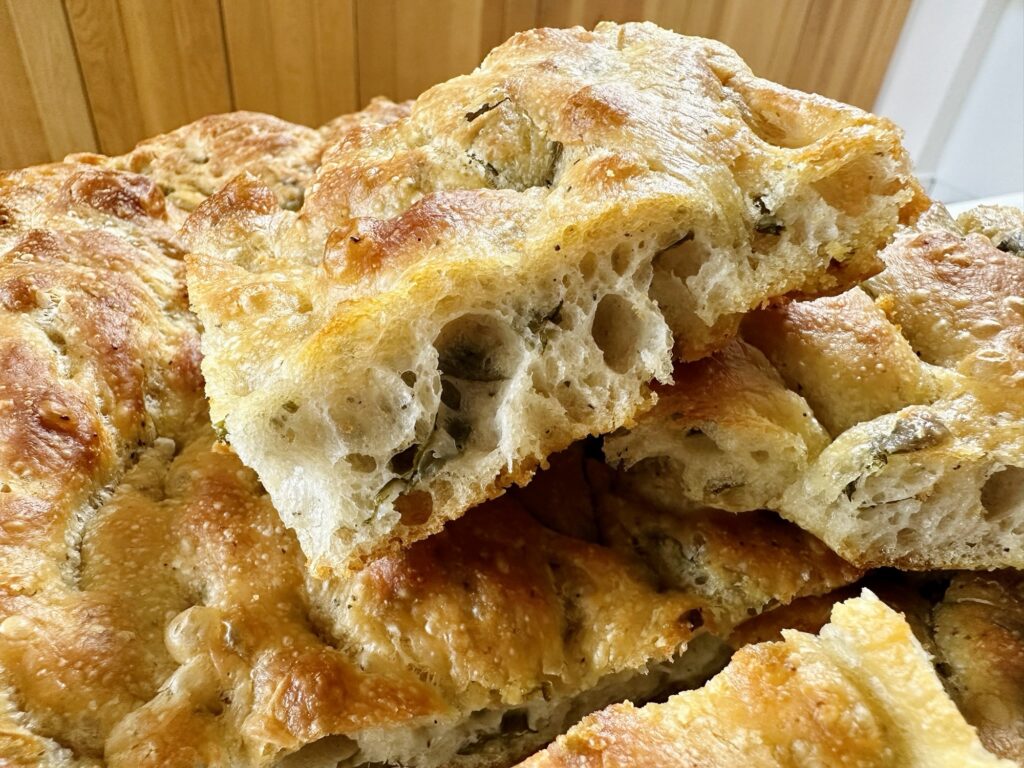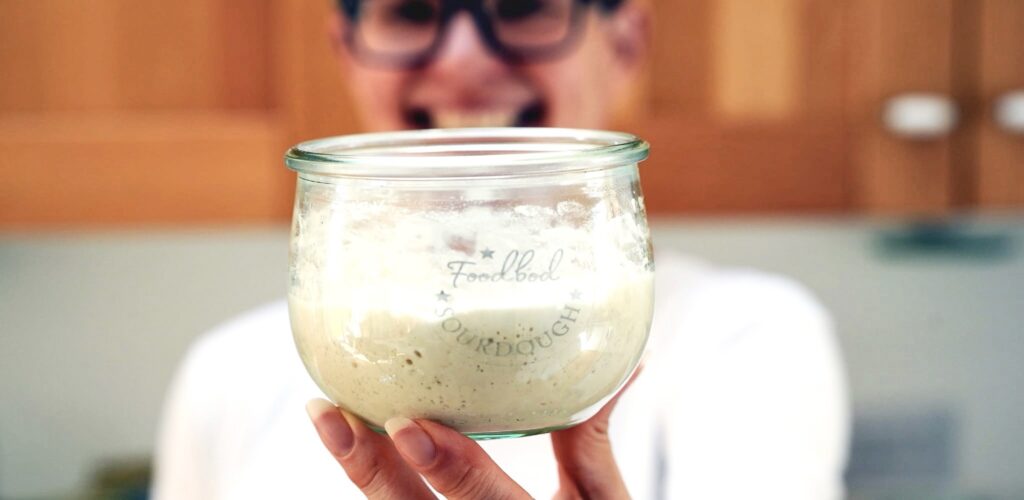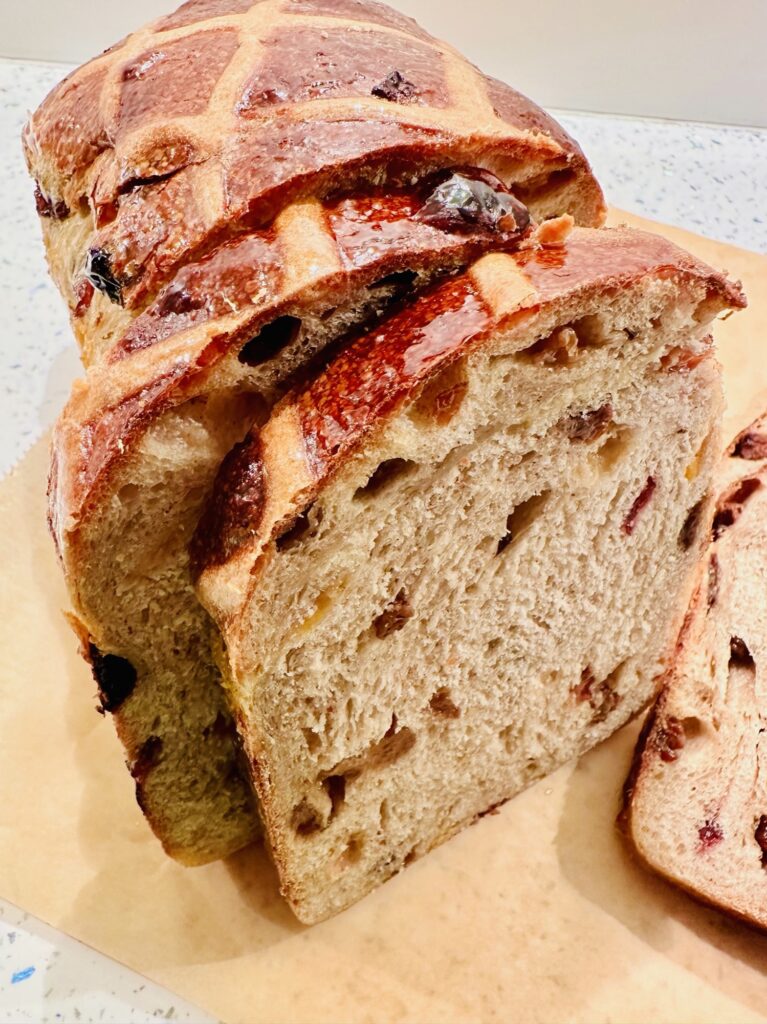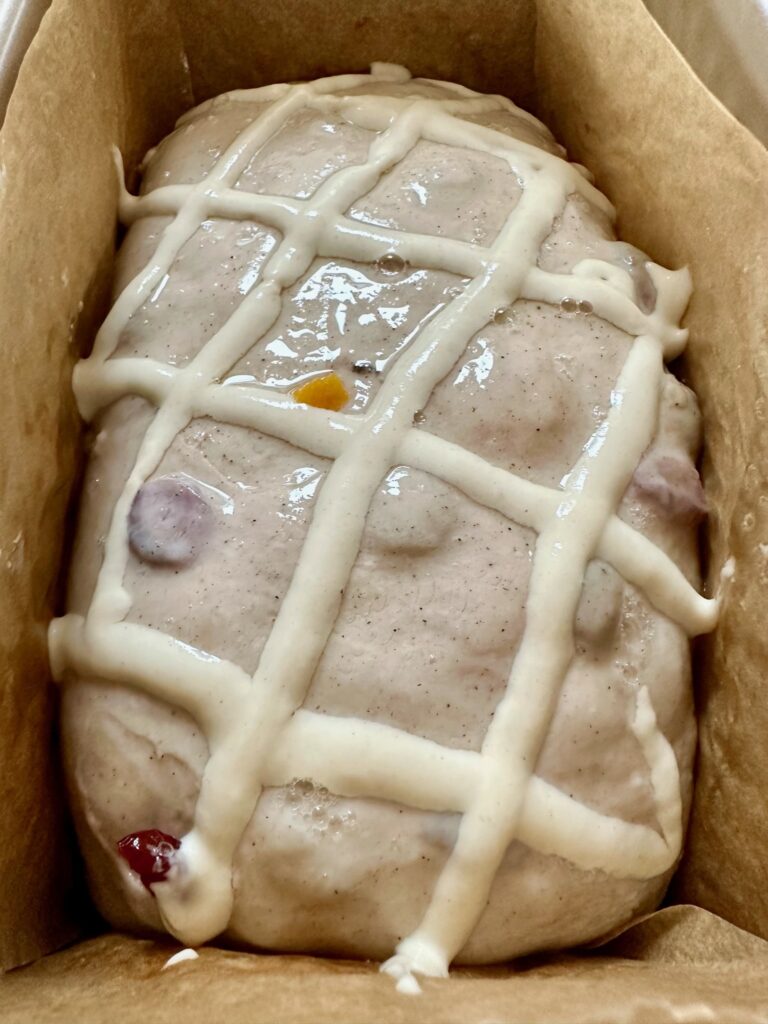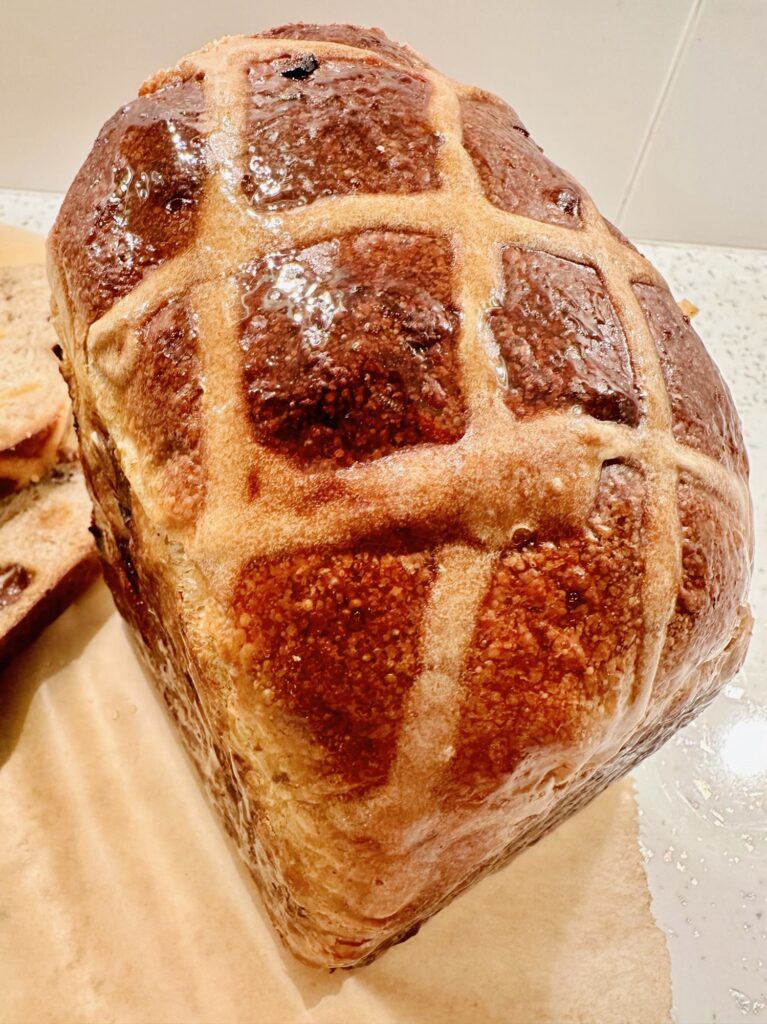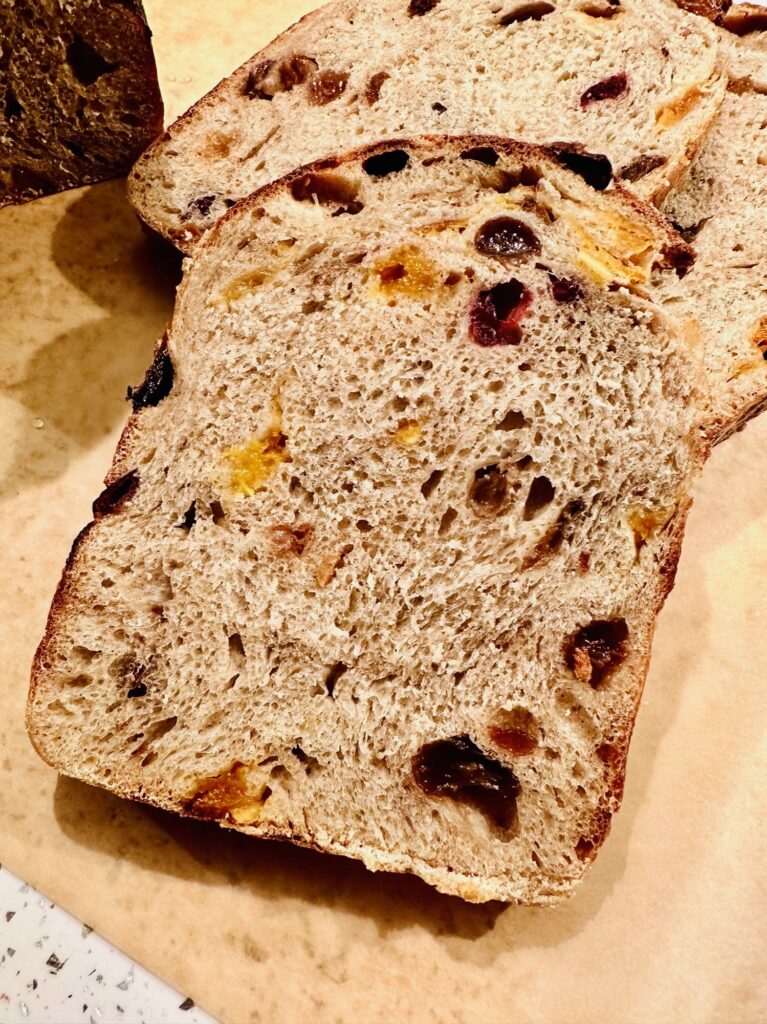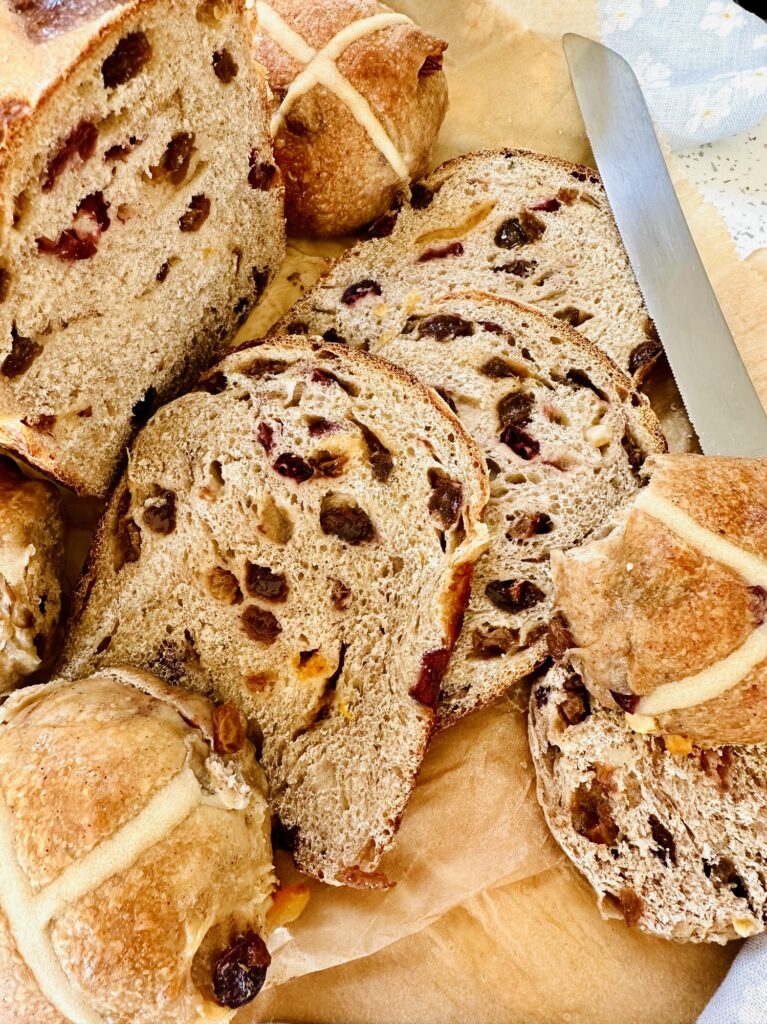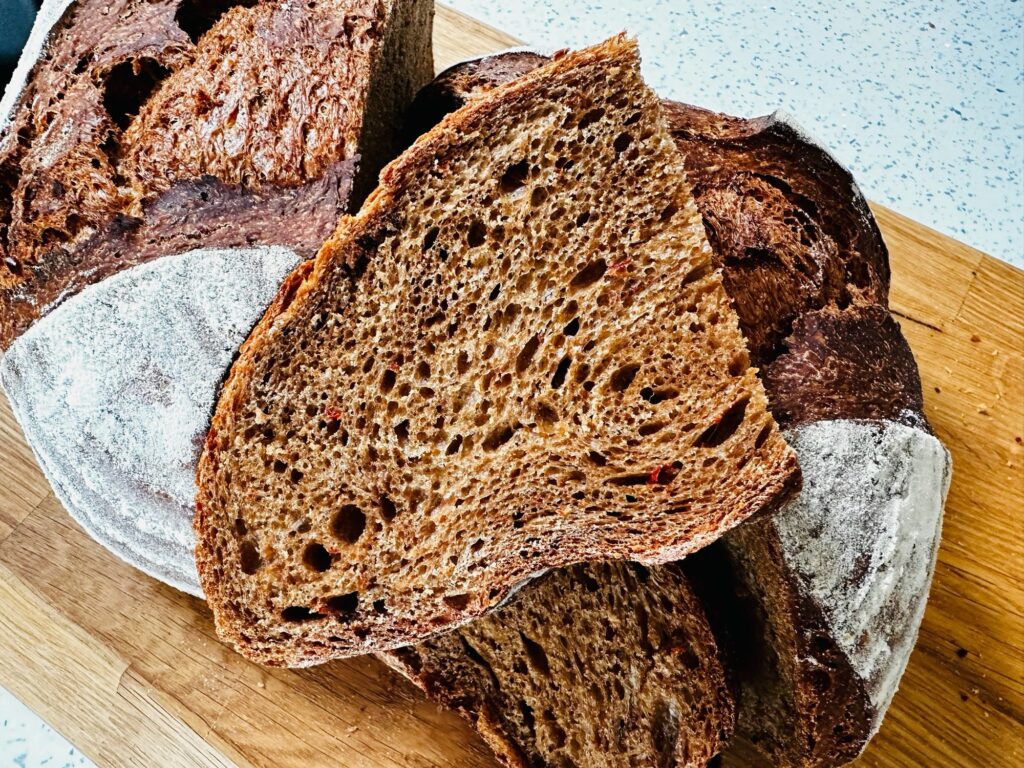
Welcome to my cocoa peanut butter and chili flakes loaf! This is a play on my chocolate and chili flake loaf and my peanut butter loaf, which you’ll find in my first book, Whole Grain Sourdough at Home.
Adding peanut butter to my standard sourdough recipe brings a wonderful richness to the dough and the loaf, the loaf will be slightly crusty with a soft inside, plus the oils mean the loaf lasts longer. The dough will be sticky initially but as the peanut butter mixes through the dough it becomes silky and smooth. The chilli flakes add a warm kick to the loaf, you can make this hotter if you prefer by using stronger chilli flakes or more of the Aleppo chilli flakes.
I used my absolute very favourite brand of peanut butter, Manilife, I love love their products, and this cocoa peanut butter is fabulous! I hope you’ll try it…
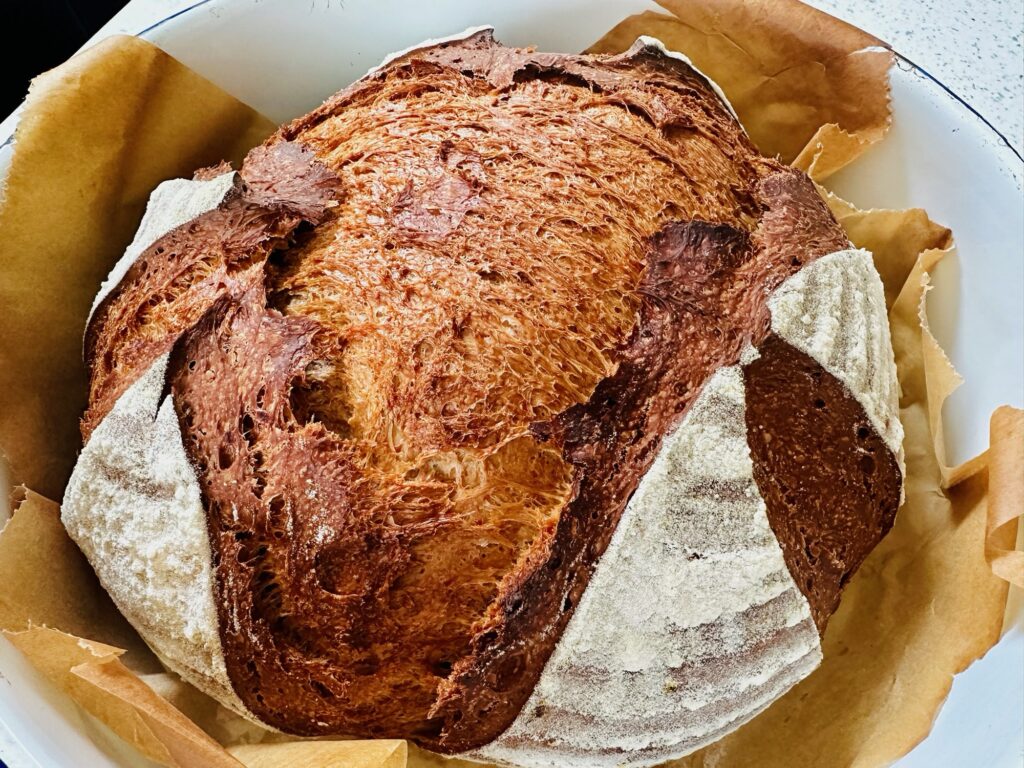
The recipe below provides the basics of the recipe and everything you need to know. See my main full master recipe for more timing, equipment and more complete/fully detailed process steps.
Makes 1 standard loaf
50 g starter
400 g water
150-200g Manilife cocoa peanut butter
500 g strong white bread flour
1-2 tbsp Aleppo chilli flakes
7 g salt, or to taste
Option: if you can’t find the fabulous cocoa peanut butter use any of the Manilife peanut butter range plus 1-2 tbsp cocoa powder.
Step 1: Roughly mix together all the ingredients, cover and leave the bowl on the counter. See the photos below to see how the dough might look.
Step 2: After 2 hours, perform a set of pulls and folds, the dough will be sticky and the peanut butter will not yet be fully mixed through. Cover and leave the bowl again.
Step 3: After 1 more hour, perform two more sets of pulls and folds, the dough will become textured and smooth and easier to work with. Cover and leave.
Step 4: Leave to proof until doubled in size, whether overnight (if you’re following my standard process) or during the day (if you’re using one of my other timetables).
Step 5: Shape the dough for your banneton, it will easily come into a smooth ball, cover, refrigerate, and proof again.
Step 6: Score and bake direct from the fridge, from a cold start for 55-60 mins at 425°F (220°C) convection or 450°F (230°C) conventional.
Step 7: Bake at the above temperatures for 50-55 minutes from preheated.
Step 8: Remove from the oven and pan and allow to cool fully before slicing.

I served this loaf with my cocoa peanut butter vegetable chilli dish which you can now find on the Manilife website.

